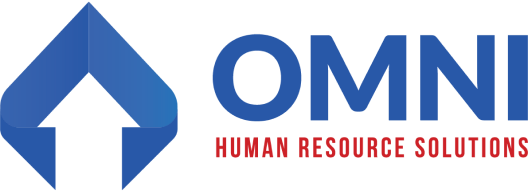Supporting employee wellbeing is one of the most impactful things leaders can do to create a healthy workplace culture and a successful organization. When people feel good, they do good work. It’s that simple.
But too often, efforts to promote wellbeing feel disconnected from the day-to-day reality of work. Generic perks or check-the-box programs may sound good, but they don’t always meet employees where they are. What works best is a thoughtful, tailored approach that reflects the specific needs of your team and the unique culture of your workplace.
In this post, we’ll explore what workplace wellbeing really means, how to design programs that reflect your people’s priorities, and how to track progress in meaningful ways.
What We Mean When We Talk About Wellbeing
At OMNI, we think about wellbeing as a whole-person experience. It’s not just physical health or mental health; it’s a combination of factors that help people feel supported, connected, and able to bring their best to work and life.
The World Health Organization describes wellbeing as a positive state where individuals and communities can thrive. In the workplace, this includes everything from feeling safe and respected to having purpose, financial stability, and opportunities for growth.
When leaders make space for wellbeing, they’re helping create an environment where people are more engaged, more resilient, and more likely to stick around.
The Dimensions of Workplace Wellbeing
When we talk about workplace wellbeing, we’re looking at the full picture of what helps people feel supported, connected, and able to do their best. While every organization is unique, there are several key areas to consider when shaping your approach:
- Emotional Wellbeing: Helping employees manage stress, build resilience, and feel safe discussing mental health and emotional challenges.
- Work Environment: Creating spaces, whether physical or virtual, that are safe, comfortable, and conducive to focus, connection, and a sense of belonging.
- Financial Wellbeing: Supporting employees in feeling secure about their current finances and confident about the future, with access to tools, education, and fair compensation.
- Growth & Learning: Encouraging curiosity, skill development, and opportunities to learn new things, whether job-related or personal.
- Physical Health: Promoting healthy habits like movement, rest, balanced nutrition, and access to care in ways that feel inclusive and realistic.
- Connection & Community: Fostering meaningful relationships at work by encouraging collaboration, peer support, and time to connect outside of day-to-day tasks.
- Purpose & Meaning: Helping employees feel that their work matters, that they’re part of something bigger, and that their efforts contribute to shared goals.
These areas are all interconnected. Strength in one often supports growth in others, and when multiple areas are thriving, people tend to feel more engaged, motivated, and fulfilled at work.
Designing a Program That Fits Your People
The best place to start is by listening.
Ask employees what matters to them. Run short surveys. Talk with managers. Look for patterns in feedback, turnover, or absenteeism. Ask:
- What are our employees struggling with right now?
- Where are we seeing signs of stress or burnout?
- Do our policies and practices reflect the kind of workplace we want to be?
Once you have a clearer picture, you can shape your efforts around what will have the greatest impact.
Here are just a few examples of how organizations are putting these ideas into practice:
- For mental and emotional health: Make it easy to access resources like your EAP, promote wellness apps, and train managers to check in with empathy and awareness.
- For financial wellbeing: Offer budgeting workshops, connect employees to financial coaching, and make sure compensation practices are clear and consistent.
- For social connection: Plan regular opportunities for teams to connect, celebrate achievements, and build trust across departments.
- For purpose-driven engagement: Share stories that connect everyday work to the organization’s mission and invite employees to help shape outcomes.
Whatever path you take, make it accessible, inclusive, and something employees actually want to engage with.
Measuring What Matters
If you want to know whether your wellbeing efforts are making a difference, tracking the right things is key.
Some practical ways to measure impact:
- Engagement surveys: Check for changes in morale or satisfaction over time
- Retention and turnover data: Are people staying longer?
- EAP or program usage: Are employees using the resources you’ve provided?
- Absenteeism: Are you seeing fewer call-outs or unplanned leaves?
- Feedback from managers and teams: What are they noticing in terms of stress, motivation, or energy?
The goal isn’t just to collect numbers, it’s to understand what’s working and where you might need to shift course. Wellbeing programs should evolve as your people and your organization grow.
Why It’s Worth the Effort
Research shows that when employees feel cared for, they’re more engaged, less likely to burn out, and more likely to trust leadership. According to Gallup, thriving employees experience 61% less burnout and 66% less worry than their disengaged peers. And they’re far more likely to stay.
For organizations, that translates into stronger performance, more collaboration, and a healthier culture overall.
When you prioritize wellbeing, you’re not only supporting your people. You’re also strengthening your team, your results, and your long-term success.
How OMNI Can Help
At OMNI Human Resource Solutions, we work alongside organizations to create custom strategies that reflect who they are and where they want to go. Our approach is personal, practical, and built on deep experience across industries.
We can help you:
- Understand your team’s wellbeing priorities
- Design programs that are both effective and achievable
- Train managers to lead with empathy and support
- Build systems to track progress and adjust over time
Whether you’re just getting started or ready to take your wellbeing efforts to the next level, we’re here to help.
One Final Thought
Supporting wellbeing isn’t about adding one more thing to your plate. It’s about aligning how you care for your people with how you want your organization to operate. It’s about building trust, creating a positive environment, and helping people succeed in ways that matter to them.
And when that happens, the benefits ripple out: to your team, your culture, and your bottom line. Let’s work together to build a workplace where your people can truly thrive. Reach out to OMNI to start a conversation about what’s possible.

